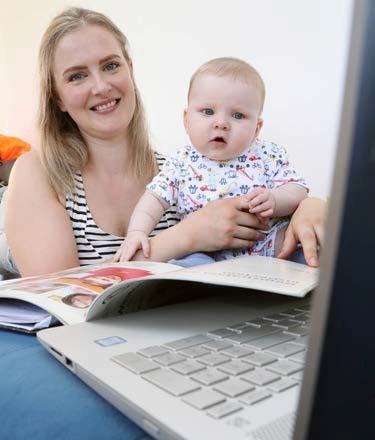Bridgend College tackles remote working and remote learning.

Like academic institutions across the country, Bridgend College, in South Wales, had the responsibility of maintaining the education of a generation during the COVID-19 pandemic.
With more than 6,000 full-time students and 720 members of staff across four campuses in Bridgend, Pencoed, Queens Road and Maesteg, the challenge of reaching every individual remotely in lockdown was immense.
Sam Morgan, director of people at Bridgend College, explains:
“Prior to the pandemic, nearly all teaching was delivered face-to-face.
"While we were working towards digital solutions for delivery, the pandemic speeded up the process of digital transformation.
“The biggest issue in the early days of lockdown was how to transform face-to-face teaching to remote learning. Very few of our staff and students had laptops, but thankfully Welsh Government was incredibly supportive and released extra funding for digital devices, so that students could study and learn from home.
Before the pandemic, Bridgend College had been working on a programme to increase digital literacy among staff and had just been named as the first Google Reference College in Wales. However, the teaching staff hadn’t yet needed to use technology to deliver their lessons remotely to teach from home.
Sam said:
“Our investment in using Google meant that a large percentage of our staff were gaining confidence in the platform, but not for the purpose of remote working. It was an incredible learning curve, helped by a team of teaching and learning coaches and digital technologists, which allowed staff to extend their Google capability and produce high-quality, engaging lessons online very quickly.
While technology played a major role in the college’s approach to teaching online from home, the management team also made sure that risk assessments were carried out for vulnerable staff.
Sam said:
“The health and well-being of our colleagues and students was central to all our decisions. We were determined not to put unreasonable pressure on our staff. It was important to us that people felt safe, understood and supported. We wanted to show compassion, understanding and acceptance. This was particularly important when the schools closed and staff were juggling home schooling and work at the same time.
"On occasions, we’d have a mum bouncing a baby on her lap during a virtual meeting and that was fine.
One of the support initiatives the college developed was a mental health and well-being programme to help staff avoid burnout, sleep well and manage stress.
There was a real push to help people understand the support on offer and videos from users of the college’s well-being services were shared widely to encourage take-up.
Sam said:
“People have shown immense levels of commitment, and trust is high between line managers and their teams. We have become much more innovative and are enjoying greater levels of autonomy. We have also seen that staff can manage their home and work life simultaneously and, as the job market opens up, we hope to show female staff, in particular, that progressing up the ladder does not mean having to sacrifice family time.
Looking to the future, Sam said:
“The biggest learning coming out of this is that no one size fits all when it comes to future ways of working. From a recent survey, the majority of our staff indicated that they would like to spend most of their time on campus, but with the ability to teach from home as well.
“We will be adopting a person-centred approach, focusing on the needs and wants of individuals while taking into account the practical nature of each curriculum. A blended approach has delivered benefits for both staff and students and is something we will be looking to retain as we move forward into the new academic year. It’s a social experiment of sorts, we will be adapting as we learnmore about what our staff and students need. We will be basing our decisions on working principles rather than a list of hard and fast rules.
